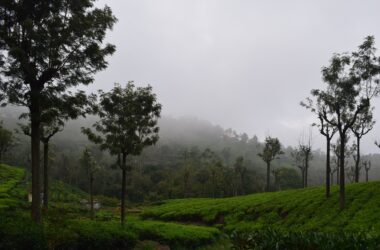Conservation Efforts in Corcovado National Park: Corcovado National Park, located on the Osa Peninsula in Costa Rica, is known for its incredible biodiversity and stunning natural beauty. The park covers over 164 square miles and is home to an array of rare and endangered species, including jaguars, tapirs, and scarlet macaws. However, this biodiversity is threatened by a range of human activities, including deforestation, hunting, and illegal fishing.
To combat these threats and protect the park’s unique ecosystem, a number of conservation efforts have been implemented in Corcovado National Park. In this article, we’ll explore some of the key conservation initiatives in the park and their impact on the environment and local communities.
Conservation Efforts in Corcovado National Park
- Reforestation and habitat restoration
Deforestation is a major threat to the biodiversity of Corcovado National Park. To combat this, park management has implemented a reforestation and habitat restoration program. The program involves planting native tree species in areas that have been cleared or damaged by human activity.
This program has been successful in restoring habitat for wildlife, improving soil quality, and reducing erosion. It has also provided opportunities for local communities to participate in conservation efforts through tree planting and other activities.
- Wildlife monitoring and protection
Corcovado National Park is home to a diverse range of wildlife, many of which are rare or endangered. To protect these species, park rangers conduct regular wildlife monitoring and protection efforts.
This includes patrolling the park to deter illegal hunting and fishing, monitoring wildlife populations to track changes and identify potential threats, and implementing measures to reduce human-wildlife conflicts.
In addition, the park has established a system of biological corridors to allow wildlife to move freely between different areas of the park, reducing the risk of fragmentation and ensuring that animals can access the resources they need to survive.
- Sustainable tourism
Tourism is an important source of income for local communities in and around Corcovado National Park. However, tourism can also have negative impacts on the environment if it is not managed sustainably.
To promote sustainable tourism, the park has implemented a range of measures, including limiting the number of visitors to certain areas of the park, establishing certified sustainable tourism operators, and encouraging the development of eco-friendly lodges.
These measures have helped to reduce the impact of tourism on the park’s environment while providing economic benefits to local communities.
- Community involvement
Conservation efforts in Corcovado National Park are not limited to the park itself. Local communities play a vital role in protecting the park’s ecosystem and promoting sustainable practices.
To involve local communities in conservation efforts, the park has established a program to provide training and support for sustainable agriculture and fishing practices. This program helps to reduce pressure on the park’s resources while providing economic opportunities for local communities.
In addition, the park has established a system of community patrols to deter illegal hunting and fishing in the areas surrounding the park.
Impact of Conservation Efforts
The conservation efforts in Corcovado National Park have had a significant impact on the park’s ecosystem and local communities. Some of the key outcomes include:
- The reforestation and habitat restoration program has resulted in the recovery of degraded areas of the park and the restoration of habitat for wildlife.
- Wildlife monitoring and protection efforts have helped to reduce illegal hunting and fishing, resulting in an increase in wildlife populations.
- Sustainable tourism measures have helped to reduce the impact of tourism on the park’s environment while providing economic benefits to local communities.
- Community involvement programs have provided economic opportunities for local communities while reducing pressure on the park’s resources.
Conclusion
In conclusion, Corcovado National Park is a remarkable natural area that has faced many challenges in terms of conservation and sustainable management. The park is a model for ecotourism and sustainability, with a range of initiatives in place to protect its diverse ecosystem and support the local communities that depend on it.
The park’s reforestation and habitat restoration program, wildlife monitoring and protection efforts, sustainable tourism measures, and community involvement programs have all contributed to the park’s success in achieving its conservation goals. Through these initiatives, Corcovado National Park has become a shining example of how conservation and sustainable tourism can coexist, benefiting both the environment and local communities.
Moving forward, it is crucial that we continue to support and invest in these conservation efforts to ensure that Corcovado National Park and other natural areas like it can continue to thrive for generations to come. With continued dedication and innovation, we can work to create a sustainable future for our planet and all of its inhabitants.
Similar Article










